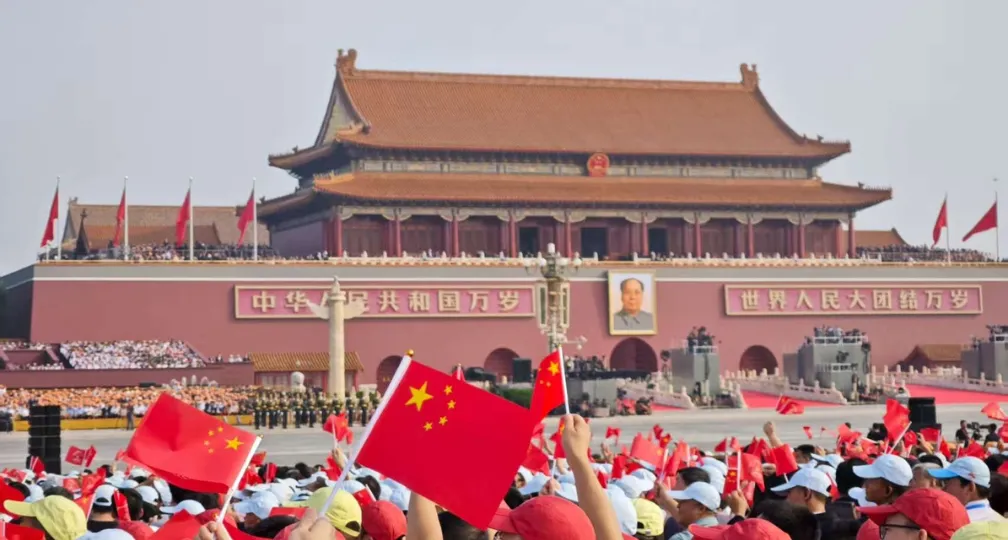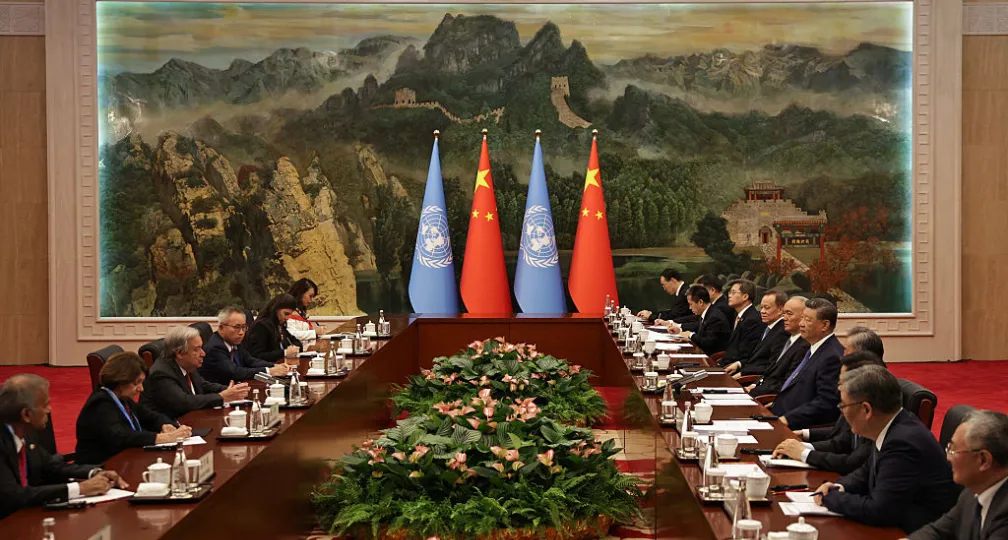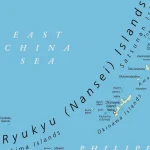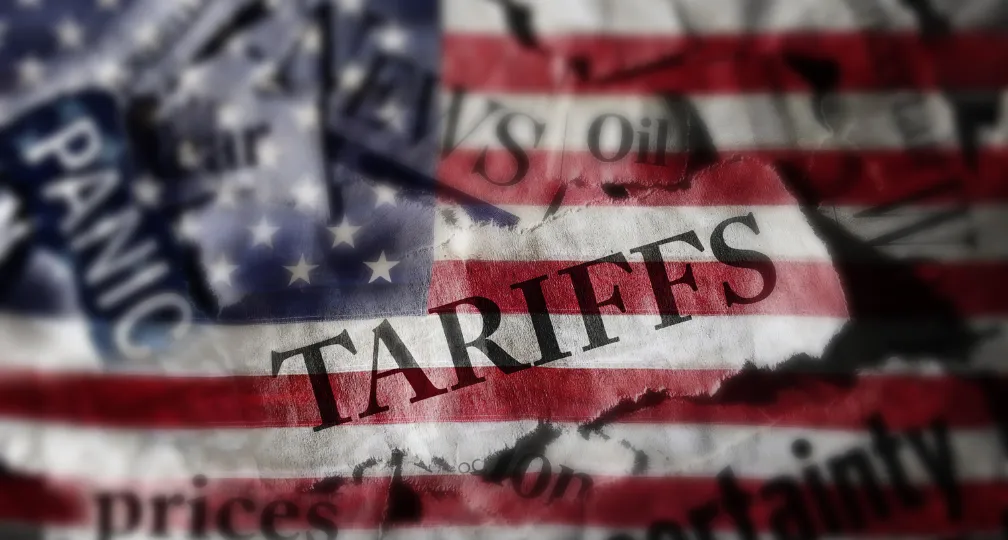IOG Economic Intelligence Report (Vol. 3 No. 22)
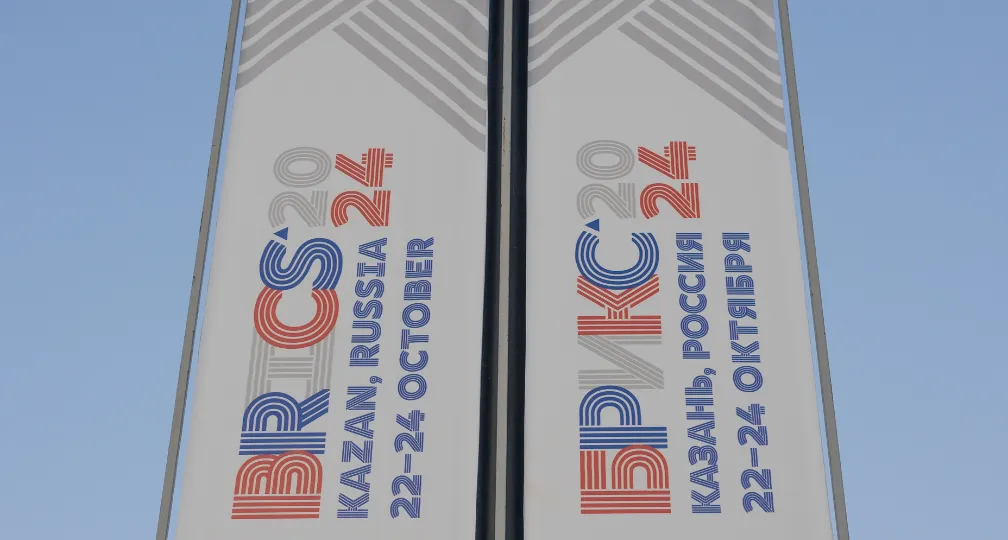
The latest regulatory developments on economic security & geoeconomics
By Paul Nadeau, Visiting Research Fellow, Institute of Geoeconomics (IOG)
U.S. Treasury Department Finalizes Rule on Outbound Investment in Tech: On October 28, the U.S. Treasury Department finalized a new rule to prevent outbound investment on advanced technologies in China with the goal of preventing China’s advancement in these technologies. The rule, which goes into effect on January 2, implements an executive order signed by U.S. President Joe Biden last year and prohibits certain transactions in advanced semiconductors, microelectronics and their manufacturing equipment, technology used in quantum computing, and artificial intelligence. Assistant Secretary of the Treasury Paul Rosen said in a statement that “This Final Rule takes targeted and concrete measures to ensure that U.S. investment is not exploited to advance the development of key technologies by those who may use them to threaten our national security”.
U.S. Announces New Rules for AI: On October 24, the Biden administration released a memo intended to guide federal agencies in their use of artificial intelligence (AI) technologies, while also requiring agencies to monitor, assess, and mitigate AI risks related to invasions of privacy, bias and discrimination, the safety of individuals and groups, and other human rights abuses”. It also calls for an international framework with allies to ensure that AI “is developed and used in ways that adhere to international law while protecting human rights and fundamental freedoms” in the leadup to a global safety summit in San Francisco next month. In announcing the guidelines, U.S. National Security Advisor Jake Sullivan said that “We have to be faster in deploying AI and our national security enterprise than America’s rivals are in theirs…If we don’t deploy AI more quickly and comprehensively to strengthen our national security, we risk squandering our hard-earned lead.”
U.S. Restricts Bulk Data Transfer: On October 21, the U.S. Justice Department proposed new rules placing limits on certain business transactions with the goal of preventing bulk federal government data or Americans’ personal data from being acquired by “countries of concern”, specifically China, Cuba, Iran, North Korea, Russia, and Venezuela. The rules implement an executive order issued earlier this year which sought to prevent sensitive data like financial, genomic, geolocation data, and health data from being stolen by foreign countries and used for espionage, cyber-attacks, and blackmail.
EU Readies Trump Tariff Response: Bloomberg reports that the European Union has prepared a list of U.S. imports to target with tariffs if presidential candidate Donald Trump follows through on his threats to raise tariffs or impose other punitive measures on the EU if he wins the White House in November. In 2018, the EU responded to Trump’s tariffs on European steel and aluminum imports with retailiatory tariffs on symbolic and politically sensitive goods like Harley Davidson motorcycles and Levi jeans.
Chinese Commercial Drone Company Sues DOD over “Military” Designation: Chinese drone company Shenzhen DJI Innovation Technology Co., Ltd. (DJI), the world’s largest drone maker, is suing the U.S. Department of Defense over DJI’s designation as a “military company” which bars the use of their products by U.S. government agencies. The lawsuit alleges that “DJI is neither owned nor controlled by the Chinese military and … sells only ‘consumer and commercial’ — not military — drones”. DJI was placed on a list of “Military Companies Operating in the United States” in 2022 after the Pentagon declared that it’s products pose national security risks. The company says that it tried to come to an agreement with the Defense Department for more than “16 months” before deciding to pursue legal options.
GM Makes Investment Commitment to EVs: U.S. automaker General Motors (GM) announced a $625 million investment in what will likely be one of the largest lithium mines in the United States. The Thacker Pass in northern Nevada is believed to contain the largest known lithium deposit in North America and is currently under development by Lithium Americas who expects to produce 40,000 metric tons of the mineral per year once the project is operational. Under the terms of the investment, GM will take a 38 percent stake in the Thacker Pass project and builds on a $320 million investment the company made in the project last year. GM has also invested in other projects, including the Hell’s Kitchen project in California’s Salton Sea Geothermal Field with Controlled Thermal Resources in 2021, and last year invested $50 million in Energy Exploration Technologies, a U.S. startup developing a process to extract lithium from brine.
Analysis: BRICS and Bretton Woods: Toward a multipolar international financial order?
By Andrew Capistrano, Visiting Research Fellow, Institute of Geoeconomics (IOG)
At the 2024 annual meetings of the World Bank Group (WBG) and International Monetary Fund (IMF), held in Washington, DC, from October 21-26, the attendees took time out from their usual discussions to mark the 80th anniversary of their institutions. Both were founded at the 1944 Bretton Woods Conference, the first attempt to negotiate a global monetary system, where the major industrial allies guaranteed the convertibility of their currencies to US dollars and the US made the dollar convertible to gold. Because the US ended gold convertibility in 1971, this year’s 80th anniversary celebration was largely centered on the longevity of the WBG and IMF.
But amid the historical reflection and nostalgia, the attendees also noted that the conditions surrounding international financial governance today are vastly different than they were in 1944. Several leaders used the event to acknowledge the interconnected, multipolar economic landscape of 2024 and discuss how governance reforms at the WBG and IMF might better represent the interests of developing countries. Such discussions suggest that even these institutions—which once defined the so-called “Washington consensus” on global economic liberalization—recognize that a new era has arrived.
For on the other side of the world, Russia was concurrently hosting the annual BRICS summit from October 22-24. The ambition to create an alternative international financial order was on full display, including mock-ups of a potential future “BRICS currency” to facilitate non-dollar-based transactions. Moreover, this summit also marked its own anniversary: 10 years since the founding of the New Development Bank (NDB) and the Contingent Reserve Arrangement (CRA), the BRICS institutions designed to mimic the WBG and IMF, respectively.
The parallel sets of institutions have similar functions. Both the WBG and NDB focus on development finance, while the IMF and CRA provide liquidity for resolving short-term currency crises and balance-of-payments issues. But there are significant differences in terms of representation and voting rights. Unlike the global orientation of the WBG and IMF, the NDB and CRA emphasize support for BRICS member states and other emerging economies. And whereas the former two institutions weigh voting rights by financial contribution, thereby granting greater power to the US and European nations, the latter two have a more equal voting structure, reflecting the BRICS’ stated commitment to a rebalanced international financial order. Similarly, another key BRICS commitment—to limit the influence of global institutions over domestic politics—is reflected in the NDB and CRA’s willingness to provide loans with fewer political and economic conditions for recipient states.
These more equitable governance structures and less restrictive lending practices make the BRICS institutions attractive to emerging economies, which have bristled at the way the WBG and IMF have used their financial power to push a neoliberal free-market agenda. For instance, the WBG often requires borrowers to implement reforms that align with Western models of governance and market liberalization, while in contrast the NDB has a more flexible approach that appeals to nations that value policy sovereignty. The NDB also promotes lending in local currencies to minimize the exposure of borrower countries to dollar fluctuations—a distinctive advantage for developing nations sensitive to exchange rate risks. Likewise, the CRA offers BRICS members an emergency liquidity pool without the stringent economic reforms often mandated by the IMF. This can provide quicker relief (enabling BRICS countries to address short-term liquidity crises without ceding as much policy control to an external body) and reduce IMF dependency (allowing for greater autonomy in addressing their financial needs).
However, the capital resources of the NDB and CRA do not come close to matching the institutions they seek to replace. Despite its appeal, the NDB’s financial capacity is limited, with an initial subscribed capitalization of $50 billion, far smaller than the WBG’s $200 billion annual lending capacity. Limited capital thus restricts the NDB’s scale and reach—since its formation, it has approved just over $32 billion for 96 projects—and while the NDB has begun to expand its membership, it lacks WBG’s global presence, expertise, and institutional depth across a diverse range of regions and sectors.
The CRA’s resources are also limited. Compared to the IMF, which has approximately $1 trillion available for lending, at present the CRA only has only $100 billion in capital. This funding gap makes it challenging for the CRA to provide a credible alternative to the IMF, since if one or more BRICS countries experience a severe financial crisis, the CRA’s resources might be insufficient to meet the demand for loans. And somewhat paradoxically, the CRA still ties its borrowers to the IMF’s influence because its framework requires that countries facing larger CRA withdrawals seek an IMF support arrangement. Regardless, the CRA’s effectiveness remains unknown, as it has never been tested in a major crisis.
But perhaps the biggest challenge for the BRICS institutions is another legacy of Bretton Woods: the US dollar remains the global reserve currency used in most international transactions, particularly in foreign exchange and commodity pricing. In this context, it is useful to examine two major BRICS developments in recent years and their impact on efforts toward “de-dollarization”.
First, Western sanctions on Russia following its 2022 invasion of Ukraine have pushed the NDB and CRA to accelerate their “de-dollarization” initiatives, moving toward more lending in local currencies. Russia has increasingly used the ruble and Chinese RMB in trade and financing to sidestep dollar-based transactions, reducing its exposure to sanctions-related risks as well as currency volatility. Yet at the same time, these sanctions have complicated Russia’s access to financial support from BRICS institutions. Although Russia is a 20 percent equity holder in the NDB, the bank paused new loans to Russia to avoid the risk of secondary sanctions, revealing a limitation in its resilience to Western financial influence. Similarly, the CRA’s capacity to assist Russia is uncertain, as other BRICS members may face penalties if they support Russia directly. This highlights how sanctions can compromise the unity and function of these nascent BRICS financial structures.
Second, the original BRICS nations have expanded to include Egypt, Ethiopia, Iran, and the UAE, while Saudi Arabia has been invited to join. On the one hand, the addition of new member states could enhance the NDB’s capital resources and regional representation, as well as bolster the CRA’s liquidity pool, which would increase its institutional clout in the global economy. On the other hand, greater diversity in political and economic priorities among the bloc could introduce coordination problems for major initiatives, such as “de-dollarization” or even a common reserve currency. It might also slow decision-making processes and further reduce the NDB and CRA’s effectiveness, potentially hindering the development of a cohesive alternative to the WBG and IMF.
In the end, a major challenge to “de-dollarization” is the fact that energy and agricultural goods continue to be priced in dollars. The 2024 BRICS summit took some first steps at creating new institutions to break this “dollar hegemony”, such as energy security initiatives designed to build on Russian and Iranian reserves to create parallel oil and gas markets, and the introduction of a “BRICS Grain Exchange” to facilitate agricultural trade among member states so as to reduce their reliance on dollar-denominated commodity transactions. These proposals show that the BRICS nations remain able to creatively address the dominance of what they see as a Western-led international economic architecture that fails to reflect their interests, needs, or ambitions.
The fact the WBG and IMF appear to have awoken to emerging multipolarity in the world economy is therefore significant. Still, whether the Western institutions can adapt to this reality, and whether the BRICS institutions can truly offer a viable alternative, are both open questions. Although the BRICS architecture represented by the NDB and CRA could underpin a more equitable international financial system, this will hinge on China’s willingness to resist using these institutions as vehicles to advance its geoeconomic interests. And tensions between China and India, or between Iran and Saudi Arabia, could undermine the project in the absence of a shared antagonism to the Western-led order.
Ultimately, the BRICS vision for a multipolar world rests on its ability to achieve cohesion among its member states and weather external storms. Only time will tell if its institutions can be as durable and resilient as the ones born at Bretton Woods.
(Photo Credit: Shutterstock)
Disclaimer: The views expressed in this IOG Economic Intelligence Report do not necessarily reflect those of the API, the Institute of Geoeconomics (IOG) or any other organizations to which the author belongs.
API/IOG English Newsletter
Edited by Paul Nadeau, the newsletter will monthly keep up to date on geoeconomic agenda, IOG Intelligencce report, geoeconomics briefings, IOG geoeconomic insights, new publications, events, research activities, media coverage, and more.



Visiting Research Fellow
Paul Nadeau is an adjunct assistant professor at Temple University's Japan campus, co-founder & editor of Tokyo Review, and an adjunct fellow with the Scholl Chair in International Business at the Center for Strategic and International Studies (CSIS). He was previously a private secretary with the Japanese Diet and as a member of the foreign affairs and trade staff of Senator Olympia Snowe. He holds a B.A. from the George Washington University, an M.A. in law and diplomacy from the Fletcher School at Tufts University, and a PhD from the University of Tokyo's Graduate School of Public Policy. His research focuses on the intersection of domestic and international politics, with specific focuses on political partisanship and international trade policy. His commentary has appeared on BBC News, New York Times, Nikkei Asian Review, Japan Times, and more.
View Profile
Visiting Research Fellow
Andrew Capistrano is Director of Research at PTB Global Advisors, a Washington DC-based geopolitical risk consulting firm. Specializing in economic competition between the US/EU and China, he analyzes how trade, national security, and industrial policies impact markets, and his firm’s clients include Japanese corporations and government agencies. He previously worked in Tokyo at the US Embassy’s American Center Japan and as a research associate at the Rebuild Japan Initiative Foundation / Asia-Pacific Initiative. Dr Capistrano holds a BA from the University of California, Berkeley; an MA in political science (international relations and political economy) from Waseda University; and a PhD in international history from the London School of Economics. His academic work focuses on the diplomatic history of East Asia from the mid-19th to the mid-20th centuries, applying game-theoretic concepts to show how China's economic treaties with the foreign powers created unique bargaining dynamics and cooperation problems. During his doctoral studies he was a research student affiliate at the Suntory and Toyota International Centres for Economics and Related Disciplines (STICERD) in London.
View Profile-
 Is China Guardian of the ‘Postwar International Order’?2025.12.17
Is China Guardian of the ‘Postwar International Order’?2025.12.17 -
 Japan-India Defense in a Fragmenting Indo-Pacific2025.12.10
Japan-India Defense in a Fragmenting Indo-Pacific2025.12.10 -
 The “Economic Security is National Security” Strategy2025.12.09
The “Economic Security is National Security” Strategy2025.12.09 -
 India - Japan: The Glimpse of a Shared Vision2025.12.05
India - Japan: The Glimpse of a Shared Vision2025.12.05 -
 Beijing’s ‘Globalist’ Agenda Under Trump 2.02025.12.01
Beijing’s ‘Globalist’ Agenda Under Trump 2.02025.12.01
 Event Report: The Trump Tariffs and Their Impact on the Japanese Economy2025.11.25
Event Report: The Trump Tariffs and Their Impact on the Japanese Economy2025.11.25 The “Economic Security is National Security” Strategy2025.12.09
The “Economic Security is National Security” Strategy2025.12.09 The Real Significance of Trump’s Asia Trip2025.11.14
The Real Significance of Trump’s Asia Trip2025.11.14 The long road to a South Korea-U.S. trade deal2025.11.26
The long road to a South Korea-U.S. trade deal2025.11.26 The Tyranny of Geography: Okinawa in the era of great power competition2024.02.09
The Tyranny of Geography: Okinawa in the era of great power competition2024.02.09


